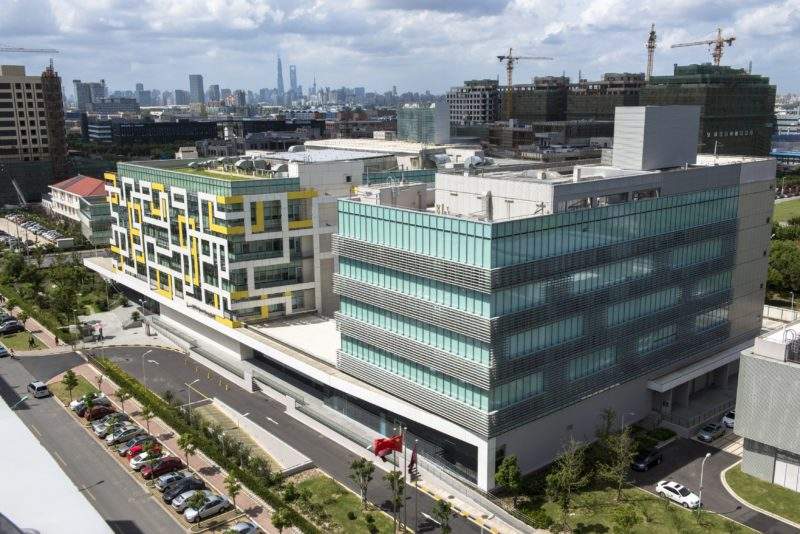The UK-based global pharmaceutical giant AstraZeneca already has a strong presence in China, generating 18% of its revenue from drug sales in this market. However, the company is about to further its imprint and provide a broader health service in China than simply selling drugs.
AstraZeneca’s CEO, Pascal Soriot, recently announced plans to use artificial intelligence (AI), robots, and apps to help transform diagnosis and disease management in China, according to a Reuters interview at the World Internet of Things Exposition in Wuxi, eastern China.
Due to the size of its population, comprising about 18% of the world’s population, China has the highest incidences of many chronic diseases, including cancer and diabetes, which are expected to increase as a result of the Westernised lifestyle and the rapidly ageing population. AstraZeneca established its initial presence in China in 1993 with plans to deliver affordable and innovative drugs to the Chinese healthcare market and supply people in the urban as well as rural communities, who historically have more limited access to established medicines in China. The company’s Chinese headquarters, and biggest manufacturing facility, is located in Wuxi, Shanghai region.
Western drug developers have started to increasingly benefit from the significant Chinese market since the China Drug Administration (CDA) introduced major regulatory policy changes in 2015. Implementing its redefined Fast Track regulatory approval, China is now more willing to quickly approve a wide range of drugs developed outside of China. This includes those drugs designed to treat diseases prevalent in China and manufactured at an FDA- or EMA-qualified plant under review for marketing authorization by the FDA or EMA.
As a result, Tagrisso, AstraZeneca’s lung cancer drug, won fast approval last year and the company expects its anaemia drug roxadustat, co-developed with FibroGen, to be approved by the end of this year. According to Non-Small Cell Lung Cancer (NSCLC) – Dynamic Market Forecast to 2025, Tagrisso is looking to generate almost half a billion US dollars in China alone in NSCLC, the most common form of lung cancer, by 2025. Furthermore, other drugs of the British pharma company have been recently included in China’s National Drug Reimbursement List making them accessible to patients in China, such as the antiplatelet agent Brilinta, the type 2 diabetes drug Onglyza, the breast cancer drug Faslodex, and an anti-psychotropic agent, Seroquel XR.
According to a recent survey carried out by GlobalData, Digital Transformations and Emerging Technology in the Healthcare Industry, AI, APIs, and the Internet of Things (IoT)—including smart apps and devices—are the three most popular emerging technologies that healthcare organisations are looking to invest into in the near future. Implementation of these fast-evolving technologies in healthcare, however, is not easy. Many independent companies are seeking to break into the healthcare industry by offering their ever-expanding and improving devices and services to aid patient data collection and aggregation, screening and diagnosis, and personalised medication decision-making. However, the adaptation of innovative technology in healthcare so far has been sparse.
Although digital transformation holds promise to build a more efficient and cost-effective healthcare system, its adaptation in healthcare is slowed by concerns such as patient data protection, regulatory issues, cybersecurity, and even work overload on the already low supply of trained experts if innovative devices and services are used incorrectly. In GlobalData’s survey, insufficient funding and lack of specific skills and talents were identified as the most critical barriers that hinder digital transformation within healthcare organisations.
As a result of its partnership earlier this year with two world-famous Chinese internet giants, Alibaba and Tencent, AstraZeneca is well positioned to execute its bigger plan to provide better service and treatment for China’s patients suffering from chronic diseases such as cancer, diabetes, and respiratory disorders, and ultimately increase its drug sales in China. The two internet giants will help develop smart health services, AI-assisted screening and diagnosis, and tackle online sales.
The Chinese government recognises the importance of the rapid development of biotechnology in addressing challenges faced by China’s healthcare system, and has embraced biotech development and the pharmaceutical sector through in its 13th Five-Year Plan (2015–2020), the ‘Healthy China 2030 Plan,’ and the ‘Made in China 2025’ plan. Beyond the biotech boom, China also plans to become a global leader in AI by 2030, in which Alibaba and Tencent play major roles.
Investing in Medtech to indirectly profit from the sizable China drug market underlines AstraZeneca’s commitment to remain a leading commitment to remain a leading pharma player in China. GlobalData believes that effective management of chronic diseases will fuel the pharma industry in China in the coming years, in which the use of smart app, AI, and robotics-assisted diagnosis and patient care will be critical components to overcome current issues of insufficient supply of doctors to meet growing demand, potentially facilitating China’s journey to become the world’s largest pharmaceutical market.




